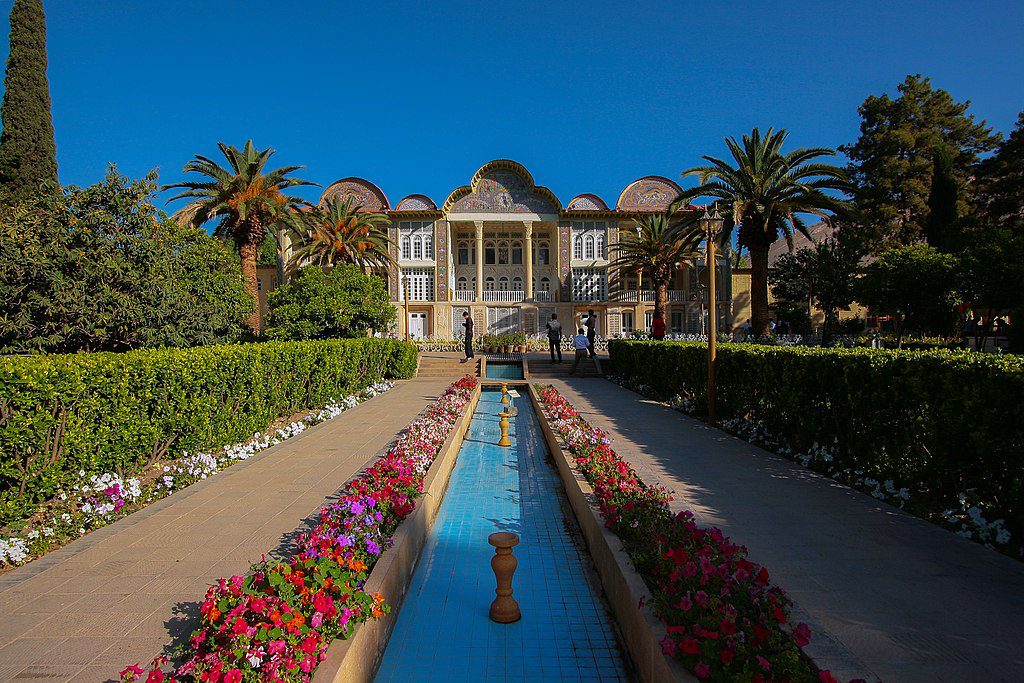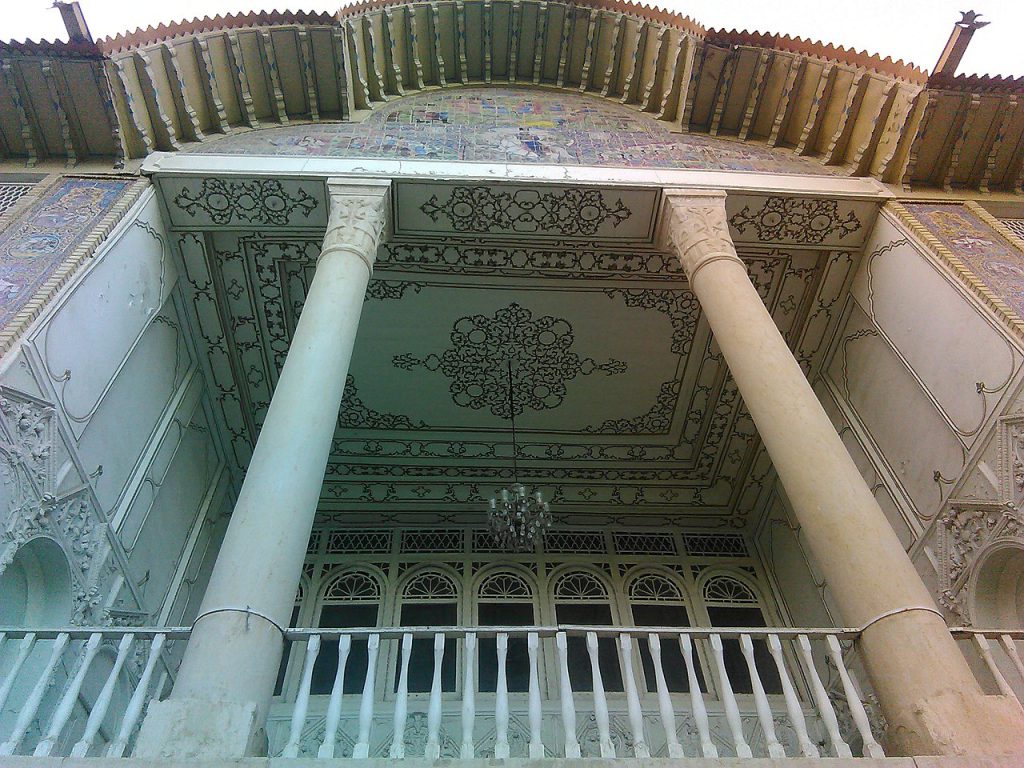Table of Contents
Welcome to our deep dive into the majestic Eram Garden, the paradisal oasis nestled in the heart of Shiraz. This lush Persian garden, bursting with verdant beauty and historical charm, is one of Iran’s most treasured gems, exuding an allure that has stood the test of time.
History of Eram Garden
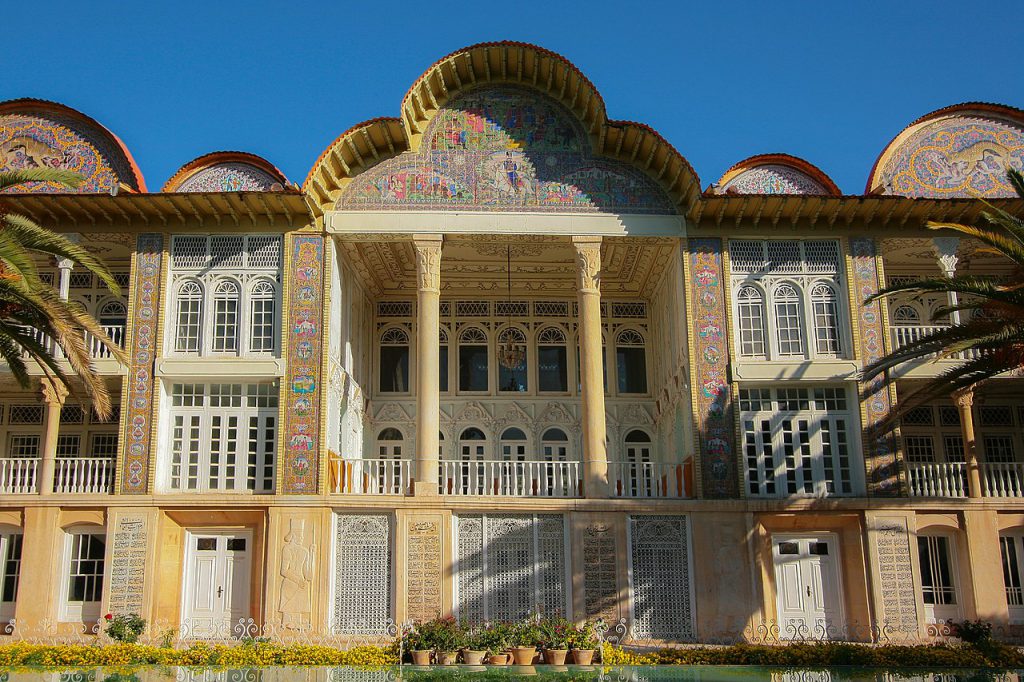
Eram Garden’s history is a tapestry woven through centuries, beginning in the 13th century during the reign of the Seljuq Dynasty. This exquisite garden has experienced numerous transformations, reflecting the tastes and influences of various noble families and rulers who have claimed it as their own. Initially known as Bagh-e Shah, it served as a royal retreat and underwent significant enhancements during the Safavid and Zand periods.
The garden’s most notable architectural feature, the current mansion, was commissioned by Nasir al-Mulk in the 19th century, marking a pivotal moment in its evolution. This opulent structure, designed by the renowned architect Muhammad Hasan, showcases the intricate artistry characteristic of Qajar architecture, with its vibrant tiles and poetic inscriptions that pay homage to Persian literary giants.
Ownership of Eram Garden shifted over the years, notably coming under the stewardship of the Qashqai tribal chiefs, who added their own touches to the landscape. By the late 19th century, after being sold to Nasir al-Mulk, the garden was transformed into a stunning botanical haven, featuring a diverse array of plants and flowers. Today, it is part of the Shiraz Botanical Garden, recognized as a UNESCO World Heritage Site.
The legacy of the garden continues to flourish, inviting visitors to explore its rich history while experiencing the serene beauty that has captivated generations.
Architecture of Eram Garden
The architecture of Eram Garden is a harmonious blend of Persian and Islamic styles, showcasing intricate details and artistic mastery. As you stroll through the garden, you will be captivated by the awe-inspiring elements that make it a true architectural marvel.
The Pavilion
At the heart of Eram Garden stands the iconic three-story pavilion, known as “Qasr-e Eram.” Adorned with stunning tilework and delicate calligraphy, this pavilion serves as a symbol of elegance and refinement. Its magnificent design is a testament to the skill and craftsmanship of the artisans who brought it to life. Take a moment to appreciate the intricate patterns and intricate details that adorn this remarkable structure.
The Reflecting Pool
As you explore the garden, you will encounter the mesmerizing reflecting pool, which mirrors the beauty of the surrounding trees and flowers. The pool adds a sense of tranquility and serenity to the ambiance, creating a picturesque setting that is perfect for relaxation and contemplation. Sit by the poolside and allow yourself to be immersed in the peaceful atmosphere, listening to the gentle sounds of nature.
The Fragrant Orchards
Eram Garden is renowned for its lush orchards that boast an impressive variety of fruit trees, including citrus, pomegranate, and fig. During the spring season, these orchards come alive with vibrant colors and fragrant blossoms, creating a sensory experience that is second to none. Take a leisurely stroll among the fragrant trees, delighting in the scents and enjoying the sight of nature’s bountiful offerings.
Natural Splendor of Eram Garden
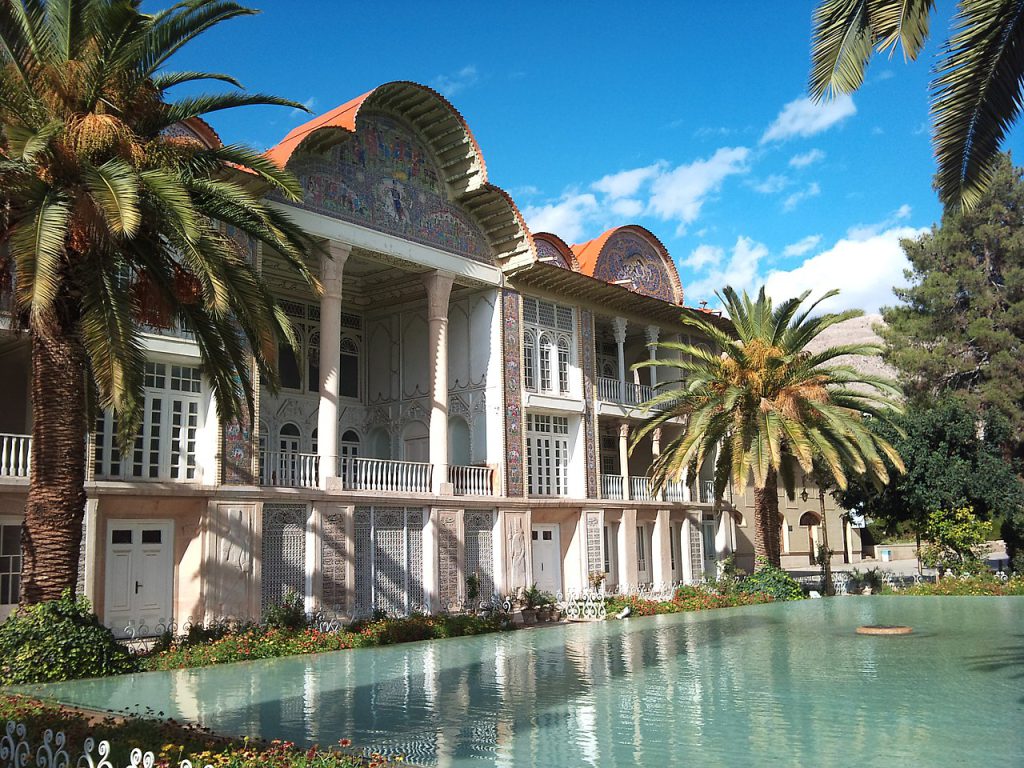
Beyond its architectural wonders, Eram Garden is blessed with breathtaking natural landscapes that transport visitors to a world of beauty and serenity. Nestled against the backdrop of the Zagros Mountains, the garden offers stunning vistas and a tranquil escape from the bustling city life.
The Paradise of Flowers
Eram Garden is a true paradise for flower enthusiasts, featuring an extensive collection of flora from all corners of Iran. From vibrant roses and tulips to delicate jasmine and narcissus, the garden is a kaleidoscope of colors and scents that will leave you enchanted. Capture the beauty of these blooming flowers through your senses and appreciate the intricate details of nature’s artwork.
The Charms of Water
Water plays a vital role in Eram Garden’s allure, with numerous streams, fountains, and cascades gracefully meandering through its pathways. The soothing sound of flowing water, coupled with the sight of sparkling reflections, adds a magical touch to the overall experience. Pause by the water features, feeling the cool mist on your skin and letting the peaceful ambiance wash over you.
The Botanical Splendor
The Eram Garden is not just about historical and architectural splendor; it’s a botanical paradise too. With its meticulously landscaped grounds boasting of over 45 plant species, it offers a verdant retreat for nature lovers. From towering cypress trees, dating back over many years ago, to aromatic rose bushes, citrus orchards, and ornamental shrubs, every corner of the garden whispers the poetry of nature.
Cultural Significance of Eram Garden
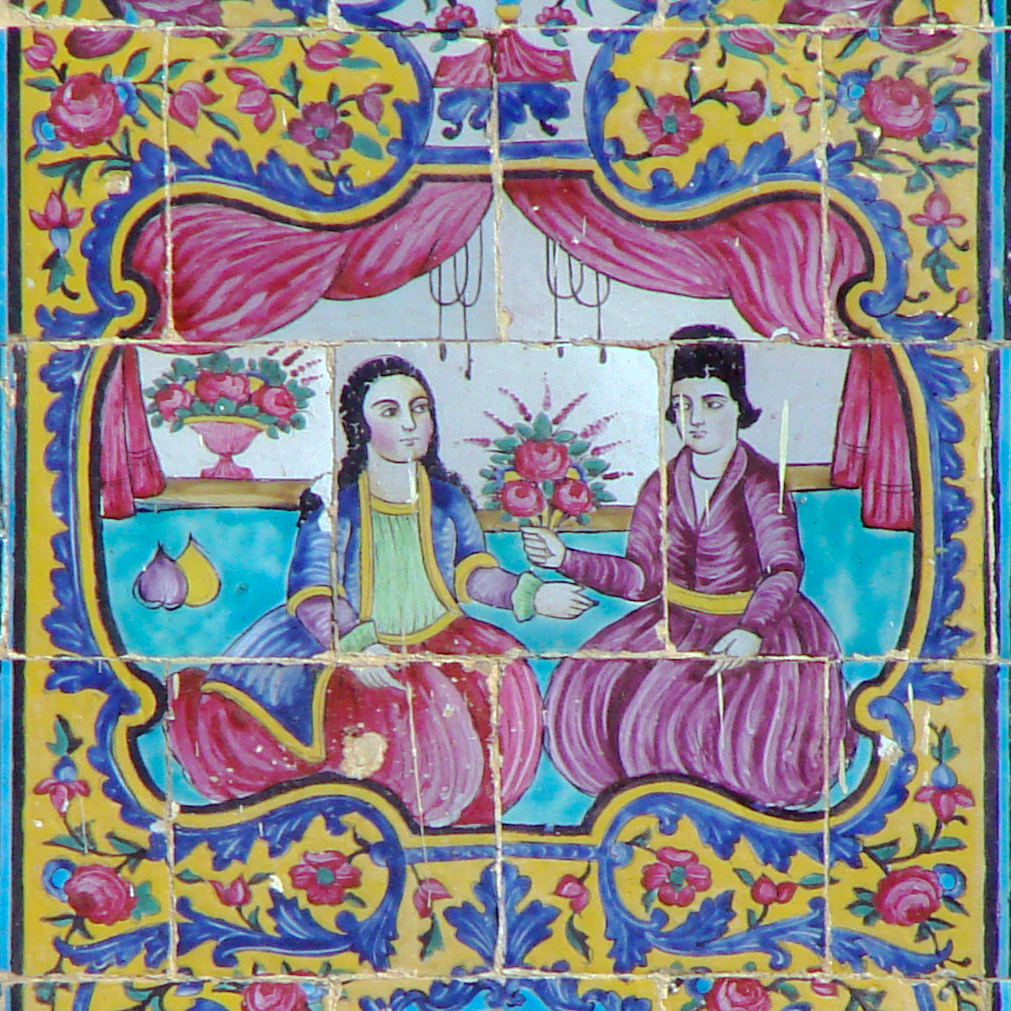
Declared a UNESCO World Heritage Site, the Eram Garden is not only an embodiment of Persian Garden design principles but also a cultural symbol that has inspired countless poems, paintings, and stories over the centuries. It’s a vibrant testament to Iran’s artistry, spirituality, and love for nature.
Sensory Experience
Eram Garden is more than just a visual spectacle – it is a multi-sensory experience. As you step into the garden, you are greeted by the delicate aroma of roses, intertwined with the fresh scent of citrus fruits. The murmuring of fountains creates a melodious backdrop, harmonizing perfectly with the rustling leaves and the chirping of birds. The explosion of colors from the vast array of flora is a sight to behold.
Pathways of Eram
The garden is crisscrossed by numerous pathways, bordered by tall, stately cypress trees and vibrant flowerbeds. Walking along these paths is akin to time travel, with every turn revealing a new aspect of Persian history, culture, and architectural brilliance.
Literature and Arts
The ethereal beauty of Eram Garden has not only mesmerized countless visitors but has also served as a muse for many artists, poets, and writers throughout history. From the verses of Hafez and Saadi celebrating its enchanting beauty to contemporary paintings capturing its seasonal transitions, the garden has remained a perpetual source of inspiration.
Sustainability and Conservation
Over the centuries, Eram Garden has faced various challenges, including changes in ownership, political upheavals, and natural disasters. However, dedicated efforts by local communities and international organizations have ensured its preservation and conservation for future generations to appreciate.
How to Get to Eram Garden
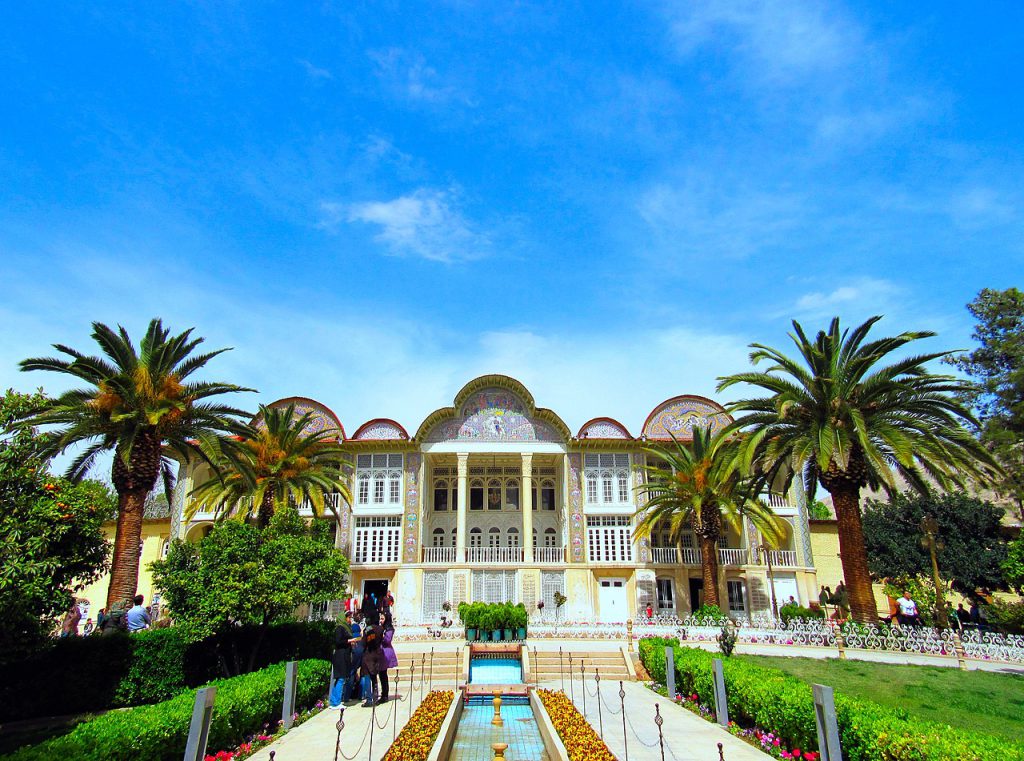
By Metro
Navigating your way to Eram Garden is a straightforward experience, especially if you opt for the metro. Start your journey at the Namazi metro station, which is conveniently located within Shiraz. From there, a leisurely 10-minute walk will take you past Daneshjoo Square, leading you directly to the enchanting entrance of Eram Garden. This route not only provides a glimpse of the local life but also sets the stage for the beauty that awaits in the garden.
By Bus
For those preferring bus travel, there are efficient options available. You can catch a bus from Kolbeh Square heading towards Eram Square or take one from Narenjestan Boulevard to Namazi Square. Both routes will drop you off within walking distance of the garden, making it easy to access this historical site. The bus services are frequent and affordable, allowing you to enjoy a hassle-free journey while soaking in the sights of Shiraz along the way.
Working Hours of Eram Garden
Eram Garden offers an inviting escape for nature lovers and history enthusiasts alike, with its doors open daily from 8 AM to 8:30 PM. This generous schedule allows visitors to immerse themselves in the garden’s breathtaking beauty throughout the day, whether it’s basking in the morning sun or enjoying the enchanting ambiance as the sun sets.
Recommended Sightseeing Time of Eram Garden
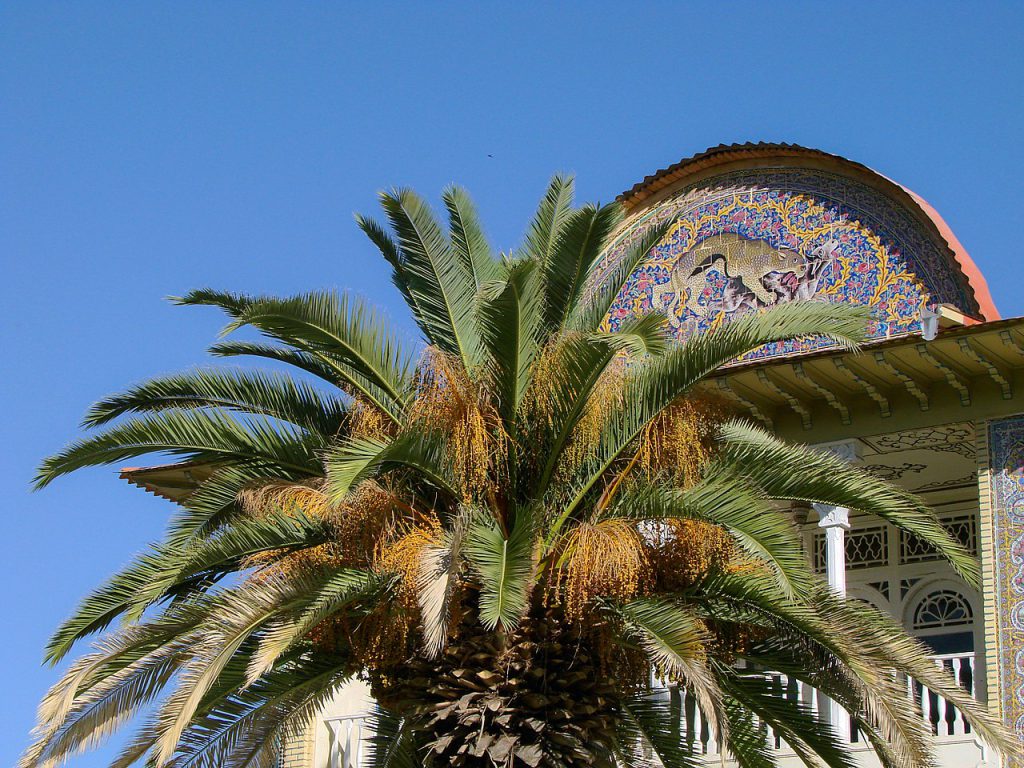
In every season, Eram Garden reveals a different aspect of its charm. Spring unveils a riot of colors as flowers bloom in profusion, summer brings lush greenery, autumn dresses the garden in hues of gold and russet, and winter showcases the ethereal beauty of bare trees against the clear blue sky.
When visiting Eram Garden, dedicating about an hour to explore its beauty is ideal. This time frame allows you to leisurely stroll through the lush pathways, taking in the fragrant blooms and the intricate design of the garden.
Where to Eat Near Eram Garden
After soaking in the beauty of Eram Garden, indulging in some delightful Iranian cuisine is a perfect way to round off your visit.
Khan Restaurant
Khan Restaurant, located conveniently close to the garden, offers a warm and inviting atmosphere where guests can enjoy a variety of traditional dishes. The menu features an array of delectable options, including succulent kebabs and rich stews, all prepared with fresh ingredients that highlight the flavors of Persian cooking. The restaurant’s charming decor and attentive staff create a welcoming environment, making it an ideal spot to relax and savor a meal after exploring the lush landscapes of the garden.
Rott Restaurant
Just a short walk away, Rott Restaurant presents a more casual dining experience while still delivering on flavor and variety. Known for its vibrant ambiance, this eatery serves a mix of Persian and international dishes, catering to diverse tastes. Whether you’re in the mood for grilled meats, vegetarian options, or even a quick bite, Rott has something for everyone.
Where to Stay Near Eram Garden
Pars Hotel
For travelers seeking comfort and convenience near Eram Garden, Pars Hotel stands out as a premier choice. This hotel combines modern amenities with a touch of traditional Persian hospitality, ensuring a pleasant stay for its guests. With spacious rooms that offer stunning views of the surrounding gardens and cityscape, Pars Hotel provides an ideal retreat after a day of exploring the vibrant sights of Shiraz.
Setaregan International Hotel
Just a stone’s throw away, Setaregan International Hotel offers another excellent option for those looking to stay near Eram Garden. This hotel is known for its elegant design and attentive service, providing a welcoming atmosphere for both leisure and business travelers. The rooms are tastefully decorated, featuring modern comforts and amenities that cater to every need.
Other Attractions Near Eram Garden
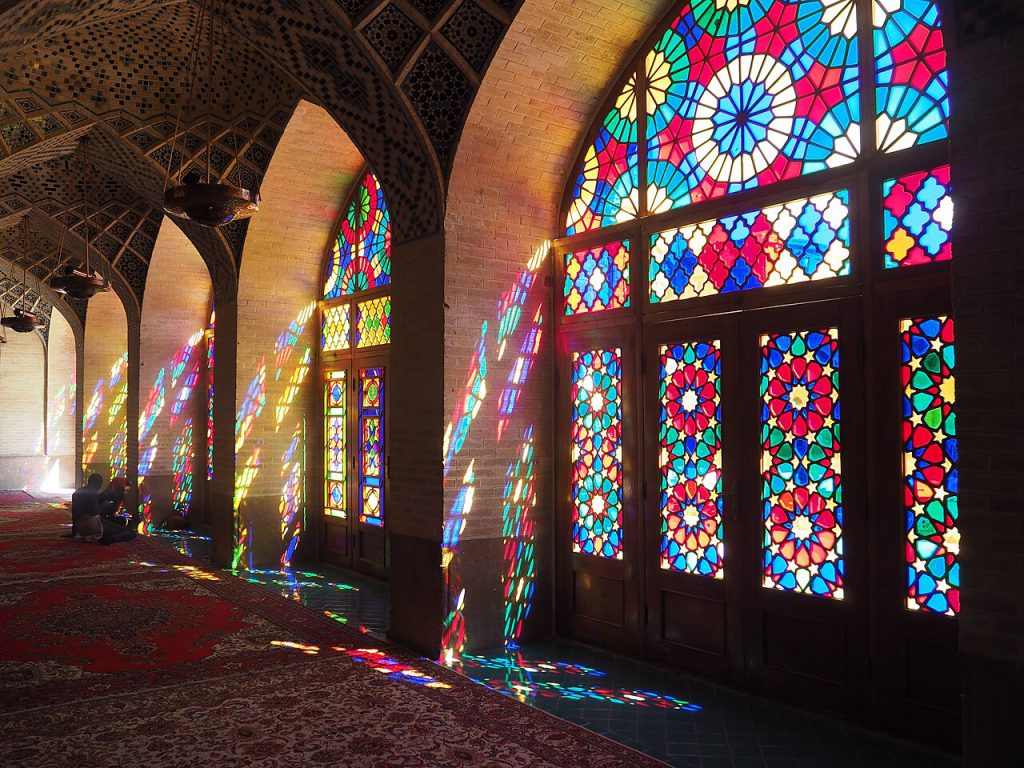
Eram Garden, a breathtaking oasis in the heart of Shiraz, is a must-visit destination for any traveler exploring the rich cultural tapestry of Iran. However, the city offers much more than just this stunning garden. Just a short distance from Eram’s lush greenery, visitors can uncover a treasure trove of historical sites and architectural marvels that showcase the region’s enduring legacy.
Nasir al-Mulk Mosque
One such gem is the Nasir al-Mulk Mosque or Pink Mosque, a stunning example of Persian architecture that dazzles the senses with its intricate tilework and stained glass windows. As sunlight filters through the vibrant hues, the interior transforms into a kaleidoscope of color, creating an ethereal atmosphere that leaves a lasting impression on all who witness it.
Karim Khan Citadel
For those seeking a deeper understanding of the region’s history, the Karim Khan Citadel stands as a testament to the power and grandeur of the Zand dynasty, its imposing walls and towers a reminder of a bygone era. Today, it stands as a museum, inviting visitors to explore its storied past and appreciate the craftsmanship that has endured through centuries.
FAQs about Eram Garden
Q1: Where is Eram Garden located?
A1: Eram Garden is located in the heart of Shiraz, Iran.
Q2: Who built Eram Garden?
A2: The garden was created in 1824 by Muhammad Qoli Khan Ilkhani, the leader of the Qashqa’i tribe. At that time, it featured a three-story house with a front porch held up by two columns.
Q3: What is Eram Garden known for?
A3: Eram Garden is known for its lush greenery, historical charm, and status as one of Iran’s most treasured Persian gardens in Shiraz.
Q4: Why is Eram Garden important?
A4: The lovely Eram garden was listed as a UNESCO World Heritage Site in 2011, representing Persian gardens and gaining international recognition.
Q5: What is the concept of the Persian garden?
A5: Persian gardens are always divided into four sections, with water being important for both watering plants and decoration. They were designed to represent Eden and the four Zoroastrian elements: sky, earth, water, and plants.
Last Words: Explore the Best of Eram Garden with a Customized Tour
Located in Shiraz, the cultural capital of Iran, the Eram Garden is just one among many jewels. Explore the city further to discover its ancient ruins, historic mosques, bustling bazaars, and vinicultural heritage, all of which contribute to its timeless allure. Visiting this magical oasis offers a journey through history, culture, and nature, transporting one to an era of Persian grandeur.
If you’re dreaming of experiencing the enchanting beauty of Eram Garden, consider embarking on a Customized tour that perfectly aligns with your interests. To help you make the most of your journey, To Iran Tour specializes in crafting exceptional Iran tours and travel packages. Our team is dedicated to designing a travel plan that suits your needs, whether you’re a history enthusiast, a nature lover, or a cultural explorer.
With our expertise, we aim to ensure that your visit to Eram Garden and beyond is nothing short of extraordinary. We’re here to help you create unforgettable memories during your Iran Tours.

